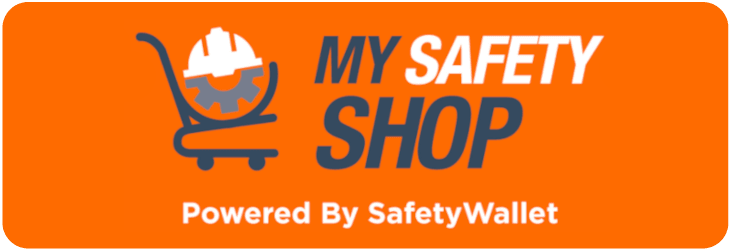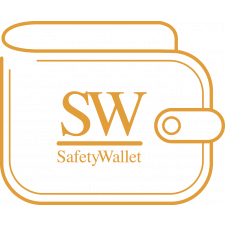Determining what action should be taken all depends on the outcome of the baseline risk assessment, an assessment that, therefore, shouldn’t be taken lightly.
What is a baseline risk assessment and what is the purpose of baseline risk assessments?
A baseline risk assessment is conducted to obtain a benchmark of type and size of potential hazards in the workplace and which could have an impact on the whole organisation or construction site. The aim should be to identify all major and significant risks before they are prioritized. Based on the outcome, the effectiveness of all current systems for risk control should be evaluated to identify if they meet all standards.
In a baseline risk assessment it is considered who is at risk, by what, where, when and why? This should be approached from a PEPMELF point of view: People, Equipment, Process, Procedures / Practices, Materials, Environment, Legal (& Liability) and Finances.
People: Who is going to be at risk? (Don't forget to consider visitors, suppliers, sub-contractors and anybody else who could be at the premises for one or other reason.)
Equipment: What equipment could be the cause of any danger?
Process: How does work flow? Could processes be improved or simplified to increase safety?
Procedures / practices: Are staff fully aware of what is being expected when doing a job, as well as when things get out of control? Do they do their task as described or are they taking (dangerous) shortcuts?
Materials: Are there materials (nearby) that might either cause, or increase the possibility of an incident?
Environment: What could be the impact on the environment when things go wrong? Will a spill have a devastating impact and could tall grass or trees contribute to a fire spreading, for example?
Legal: Does existing legislation dictate certain preventative measures, or can such legislation be expected to be ratified soon? And what will be the consequences when the company fails to act?
Finances: How much will certain measures cost? Are there alternatives or should additional steps be considered that could avoid the need for forking out money?
Generally speaking a baseline risk assessment looks at aspects like noise, ventilation, temperature extremes and lightning. But it could also include an Environmental Impact study or an Aspects Register, which is at the heart of any ISO 14001 EMS. Depending on the organisational level at which the outcome is expected to implemented, it could be decided to do the baseline risk assessment per site or on a holding level.
A proper baseline risk assessment should provide a set of risk profiles, as well as a clear description of the methodology, system, terminology, etc. used in the scoping exercise. It might also include anything that is required to improve the baseline risk assessment in the future.
Establishing a baseline risk assessment requires the input of various qualified professionals, with each person involved being expected to add value regarding their expertise or location. Although, generally speaking, it could work if each competent person provides input separately, consideration should be given to attending to the process in a workshop or even multiple workshops.
All this makes a baseline risk assessment very important, but it is certainly not the final step to ensure safety and security in the workplace. The outcome of the baseline risk assessment should be used to carry out additional, and more in-depth, risk assessments for specific threats.
MAKROSAFE have been assisting clients for more than 23 years with Risk Assessments, contact us now to find out how we can assist you. MAKROSAFE / SAFETYWALLET / MY SAFETY SHOP are in Partnership.
MAKROSAFE / SAFETYWALLET / MY SAFETY SHOP are in Partnership.
Other Risk Assessments are:
> Task Based Risk Assessment
A Task Based Risk Assessment is activity/task based. All tasks and activities are first identified. Once identified each task is analysed and measured for risk level.
Control Measure are then suggested and implimented to eliminate or mitigate harm to humans, equipment or property. The Task Risk Assessment must be reviewed annually and/or when a new machine or task is added to the workplace. The specific task assessment must also be reviewed after an incident ocured and possible control measures changed / adjusted to prevent such an incident from happening again. All changes must then be communicated to all staff.
To read all about the SafetyWallet Subscriptions and benefits, click on the image below: > Issue Based Risk Assessment
> Issue Based Risk Assessment
An Issue Based Risk Assessment is meant to carry out a thorough study that will lead to action plans for dealing with a lot of risks. This type of assessment usually looks at things like operational activities, processes, and business functions that are based on systems and systems.
Usually, it can be used to manage changes in a task or an overall process. It focuses on figuring out the risks that exist in a specific task, process, or activity. Some examples of when IBRA must be carried out include:
- When new machines or equipment are introduced in a workplace
- A system of work or operations is changed
- After an accident or a near-miss has occurred
- When a risk profile has changed
- When a hazard analysis has been processed
- When an environmental impact assessment has been carried out
The MAKROSAFE Health and Safety Risk Control Package will assist you with your Risk Management Programme.
By signing up with our Health and Safety Risk Control Package, MAKROSAFE will assist you with your Risk Management journey.

Is a Health and Safety Risk Assessment critical for any Business?
Yes, a health and safety risk assessment is an important part of any business's operations. It helps identify potential hazards and assess the risk of injury or harm to employees, customers, and other stakeholders. By identifying and mitigating risks, businesses can prevent accidents and injuries, protect their employees, and ensure compliance with legal and regulatory requirements. This also helps to create a safer and more productive work environment.






Comments (5)
Baseline Risk Assessment quote
2023-07-24 11:03:23Dear Lungile Thank you for your request via our comments page... For a Base Line Risk Assessment quote, kindly follow the link below, select the correct one aligned to your total staff count at the site concerned... Add item to CART, open CART at top of page, press the PRINT QUOTE button, once approved return to CART and complete the FORM and press COMPLETE ORDER, a support team member will contact you and assist you going forward... LINK: https://www.mysafetyshop.co.za/Shop/Category/Risk-Assessment
2023-07-24 11:38:39Brilliant precise write-up
2020-05-27 03:27:13Hi kindly assist me with the baseline risk assessment
2024-01-25 06:19:50Dear Celestina Thank you for your request via our website comments... Kindly follow this link: https://www.mysafetyshop.co.za/Shop/Category/Risk-Assessment Select the RA that is inline with your employee count, add item to CART, open at top of page, press PRINT QUOTE REQUEST button... When approved, return to CART, complete the FORM and press COMPLETE ORDER... One of our friendly support team members with contact you and assist you going forward, PS: you do not pay online, you will receive an invoice for payment...
2024-01-26 08:01:36Dear Celestina Thank you for your request via our comments page... For a Base Line Risk Assessment quote, kindly follow the link below, select the correct one aligned to your total staff count at the site concerned... Add item to CART, open CART at top of page, press the PRINT QUOTE button, once approved return to CART and complete the FORM and press COMPLETE ORDER, a friendly support team member will contact you and assist you going forward... LINK: https://www.mysafetyshop.co.za/Shop/Category/Risk-Assessment
2024-01-26 08:15:02Dear Celestina Thank you for your request via our comments page... For a Base Line Risk Assessment quote, kindly follow the link below, and select the correct one aligned to your total staff count at the site concerned... Add the item to CART, open CART at the top of the page, press the PRINT QUOTE button, once approved return to CART and complete the FORM and press COMPLETE ORDER, a friendly support team member will contact you and assist you going forward... LINK: https://www.mysafetyshop.co.za/Shop/Category/Risk-Assessment
2024-01-26 08:34:13Dear Sir/ Madam I would like to request a quote for company Baseline Risk Assessment 0692636472
2025-05-19 12:56:59Good morning, I'm not sure if you are the right people to chat to...... we need to get a Baseline Risk Assessment for our Workshop and is not sure how to go about it. Could you help me.
2023-08-22 11:02:20Dear Lindah Thank you for your request via our comments... I have called and also sent you an email...
2023-08-23 09:24:23